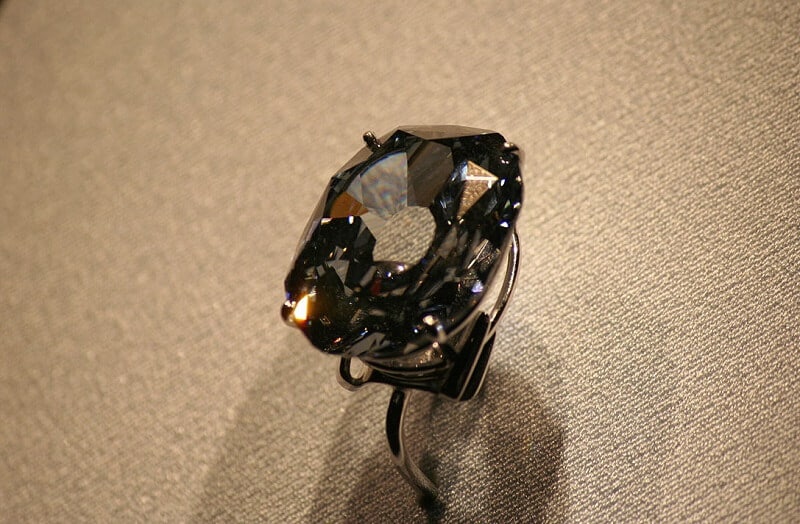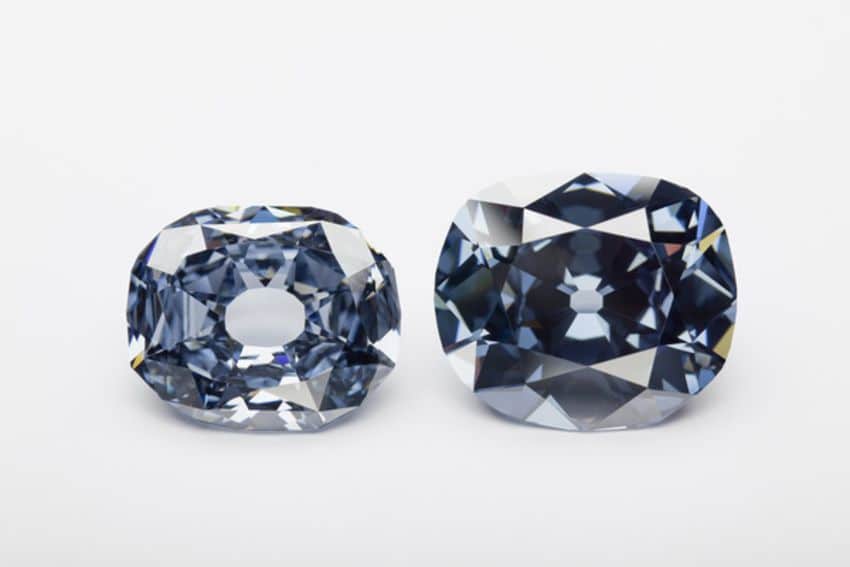The provenance of the Wittelsbach Graff has a bit of mystery to it, which adds to the fascination. A stunning beauty weighing 31.06 karats, the Wittelsbach Graff Diamond is the chief rival to another world famous gem, the Hope Diamond. This guide looks at the connection between the two and other historical facts of the Wittelsbach Graff Diamond.
In 2008, the Wittelsbach Graff Diamond set the world record when it sold for $24.3 million at an auction. Although it lost that position to the Graff Pink, the feat only added to the enthralling history of the famous blue diamond. A rare blue hue with just the slightest hint of gray characterizes the Wittelsbach Graff Diamond. It is a flawless gem that has passed from one royal family to another since its discovery.
The History of the Wittelsbach Graff Diamond

The Indian Roots of the Wittelsbach Graff Diamond
The Wittelsbach Graff Diamond surfaced in the 17th century in the ownership of Infanta Margareta Teresa, daughter of King Phillip IV of Spain. King Philip gave the gem to his daughter for her upcoming engagement to Emperor Leopold I of Austria.
Before the 1700s, India was the only source of diamonds. It has always been theorized that the Wittelsbach-Graff and the Hope diamonds came from the same stone in the Golconda mines because they are very similar. However, scientists at the Smithsonian Institution conducted a thorough study of the two gems. The research revealed that they were not siblings. It is speculated that Jean-Baptiste Tavernier, a gem trader and explorer, brought the Wittelsbach diamond from India.
Despite its mysterious beginnings, one thing that is proven by records is that the gem belonged to Empress Infanta Margareta Teresa. In 1673, the Empress died and left the gem to her husband, Emperor Leopold I. From the Emperor, the stone landed in the hands of Archduchess Maria Amelia, his granddaughter who married the Crown Prince of Bavaria, Charles Albert. After more than a century in the Bavarian House, the crown jewels were scattered when Bavaria became a republic during WWI.
The Wittelsbach Graff Diamond Lost and Found
In 1931, the Wittelsbach Graff was put up for sale at Christie’s in London. However, it disappeared from the public eyes and records after that. It then reappears in 1958 at the World Exhibition Brussels for six months. However, people did not recognize it as the Wittelsbach Graff Diamond.
In 1962, jeweler Joseph Komkommer was hired to inspect an unnamed stone for recutting. That is how he discovered it was the Wittelsbach Graff. Initially named the Wittelsbach Blue, after jeweler Laurence Graff recut it at Christie’s in 2008, it turned into the Wittelsbach-Graff Diamond.
Properties of the Wittelsbach Graff Diamond
The Wittelsbach Graff was originally a 35.56-carat gem until its latest owner, Lawrence Graff, decided that it needed polishing. Graff believed that the ordinal cut of the stone did not give it a chance to be as perfect as it could be. Recutting the diamond improved its brilliance and clarity. However, getting rid of the bruises and nicks accumulated over the years meant that the blue diamond lost some of its weight. It is how the Wittelsbach Graff Diamond came to be 31.06 karats.
Blue diamonds are some of the rarest in the world. This is why the Wittelsbach Graff and Hope diamonds are so famous. Studies showed that the Wittelsbach Graff contains boron, which is responsible for its color – a fancy deep grayish blue. It is also categorized as a Type IIb diamond, meaning it is a semi-conductor. Only 0.1% of all naturally occurring diamonds fall in this class. The Wittelsbach-Graff as the Stellar Brilliant Cut, which includes 82 facets with vertical, splits in the core facets. Its pavilion is lined with 16 sides, which look like needles and arranged in pairs.

Myths Surrounding the Wittelsbach Graff Diamond
There are no records that substantiate the actual origins of the Wittelsbach Graff Diamond. Dr. Klaus Schneider is the man who told the story about King Philip buying the gem straight from a stone trader although there weren’t any records to prove this. Apparently, the records got lost during the Spanish civil war. Other researchers, namely, Jürgen Ever, Rudolf Dröschel, and Hans Ottomeyer, however, refute these assertions, saying that no records were lost during that time. It is possible that the stone came into the possession of Infanta Margareta Teresa in another way.
Another mystery is where the diamond was after it sold at a Christie’s auction in 1931. There have been claims that it was sold to a Mr. Thorp, who never took it home. Later, there were allegations that the gem spent the period between 1931 and 1951 at a vault in Wittelsbacher Ausgleichsfonds (WAF). Between 1966 to 2006, the diamond fell off the radar once again.
Where Is the Wittelsbach Graff Diamond Today?
For the first time in about 80 years, Christie’s presented the Wittelsbach Graff Diamond in November 2008. Lawrence Graff, the billionaire jeweler, says he knew they had to have the stone immediately after seeing it. He bought it at auction for $24,311,191. After cleaning it up, Graff debuted the gem alongside the Hope Diamond in conjunction with the Smithsonian Museum of Natural History in January 2010. The presentation ended in November 2010, and since then, the Wittelsbach-Graff Diamond stays in a Graff vault.
https://www.youtube.com/watch?v=M8t-pgV3wF0
Final Thoughts
Every diamond has its story, and the Wittelsbach Graff’s is just as intriguing as other world famous diamonds. From the Spanish to the Austrian and eventually the Bavarian royalty, the Wittelsbach Graff Diamond has been one of the most recognized crown jewels. The internally flawless stone rivals only the Hope Diamond in its clarity, brilliance, and beauty. Its antique oval stellar cut is one of the most sophisticated of its time. Now resting as part of the Graff private collection, we can only hope that the diamond’s future will be as colorful as its past.






